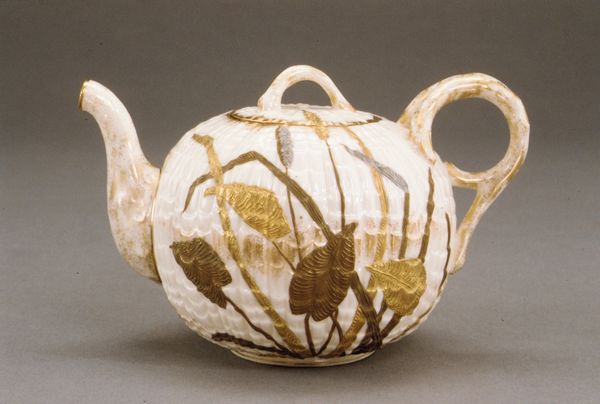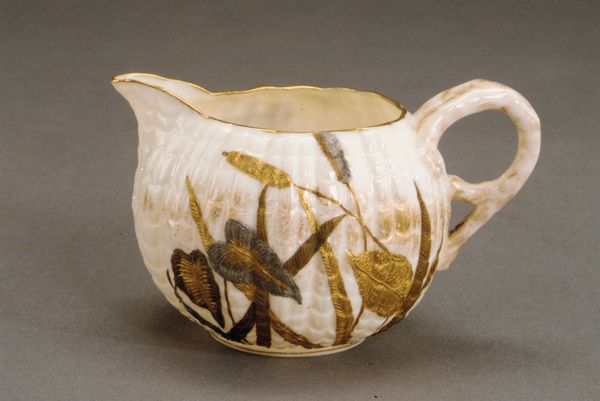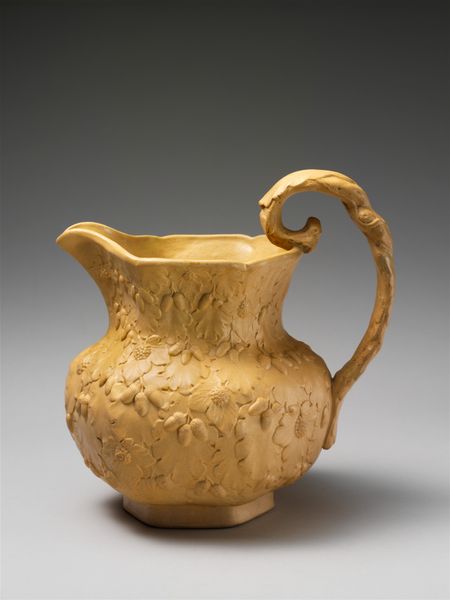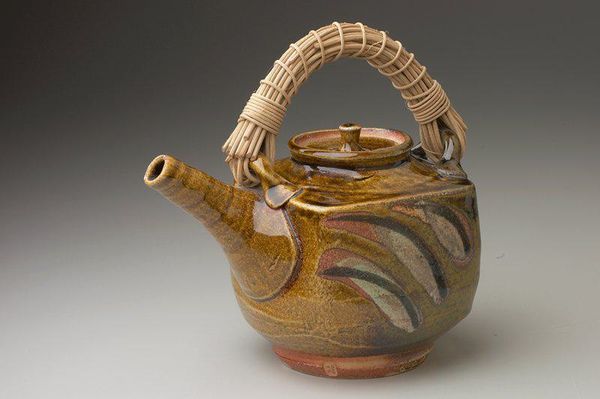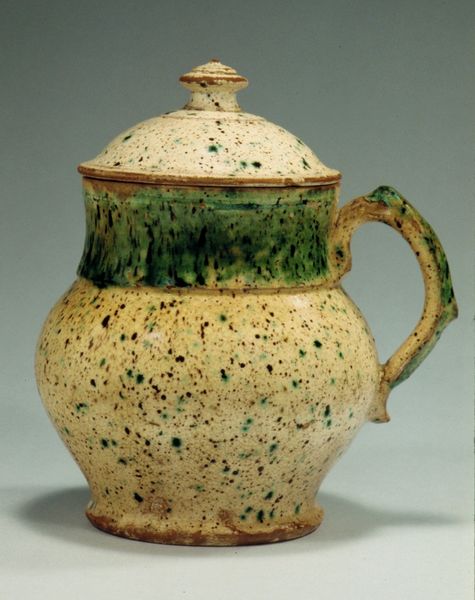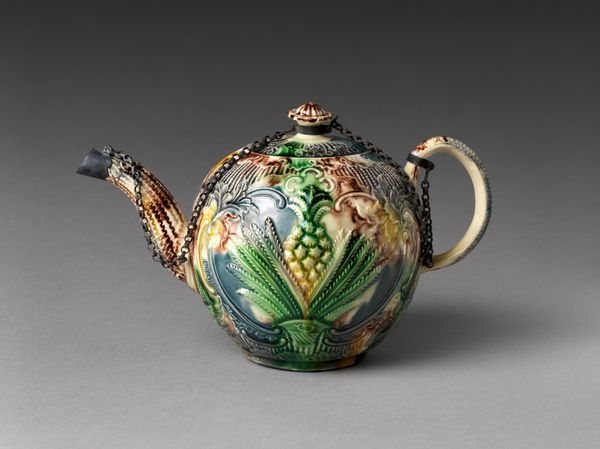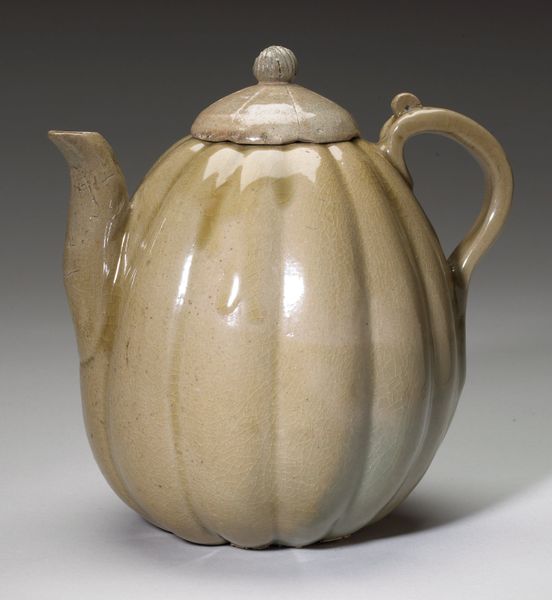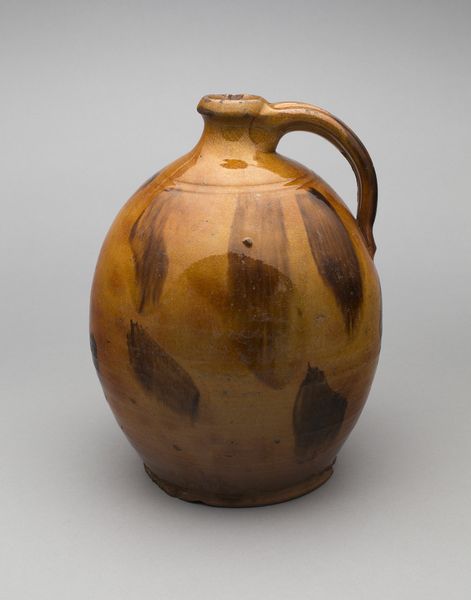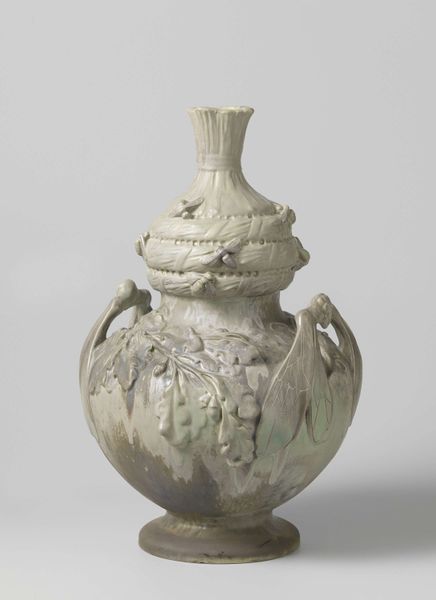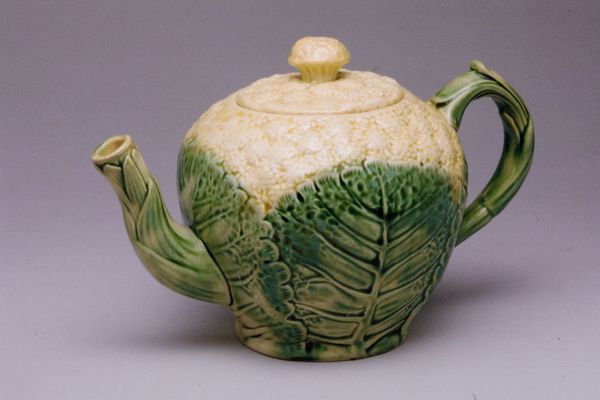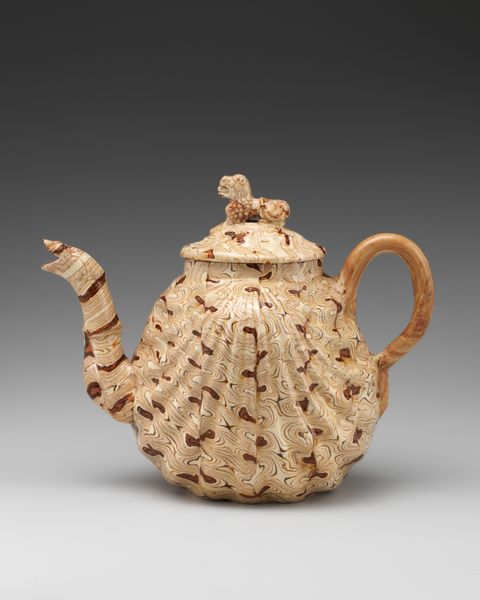
ceramic, earthenware
#
ceramic
#
earthenware
#
stoneware
#
ceramic
#
decorative-art
Dimensions: 4 7/8 x 3 5/16 in. (12.4 x 8.4 cm)
Copyright: Public Domain
Curator: Allow me to introduce a fascinating example of American ceramics, a covered sugar bowl produced by Ott and Brewer between 1876 and 1883. Editor: It’s lovely! It evokes such a delicate, almost precious feeling. The subdued palette with hints of gold give it a wonderfully refined appearance. Curator: The refined appearance comes through the construction, doesn't it? Notice the meticulous detailing in the ceramic and earthenware. The exterior is crafted with careful attention to texture and shape. Its body has this sort of basket-weave effect in relief, over which the stylized motifs of aquatic plants and grasses have been painted in metallic pigments. Editor: It feels evocative of the aesthetic interests popular at the time, doesn’t it? We should recall that sugar bowls like this one functioned within elaborate rituals of social class. Serving and consuming sugar was increasingly embedded with social, economic, and even colonial power dynamics of the era. How might this object be viewed in relation to the Opium Wars or the rise of sugar plantations and slavery? Curator: The form itself also presents a rather interesting geometry. The bulbous shape, combined with its handles, offers a balance between the utilitarian and the ornamental. Consider how each element contributes to a harmonious, albeit symmetrical design. The lid with its finial continues that perfect repetition, making for a cohesive structure. Editor: But looking closer at the ornamentation, are we also not meant to see the symbolism inherent in the chosen motifs? The stylized plants, probably meant to depict cat tails and perhaps lily pads, suggest an idealized vision of nature – divorced, naturally, from the exploitation that enabled its creation for consumers in America. This domestic object sits at a crossroads of beauty, power, and commerce. Curator: A nexus indeed! The quality of the craftsmanship certainly underscores an interest in artistic merit, beyond mere utility, indicating perhaps the maker’s aspirations toward elevated design standards. Editor: Precisely! An artifact reflecting aspirations, as well as realities—it is precisely this tension which renders pieces like this eternally interesting. Thank you for directing our gaze, today.
Comments
No comments
Be the first to comment and join the conversation on the ultimate creative platform.
